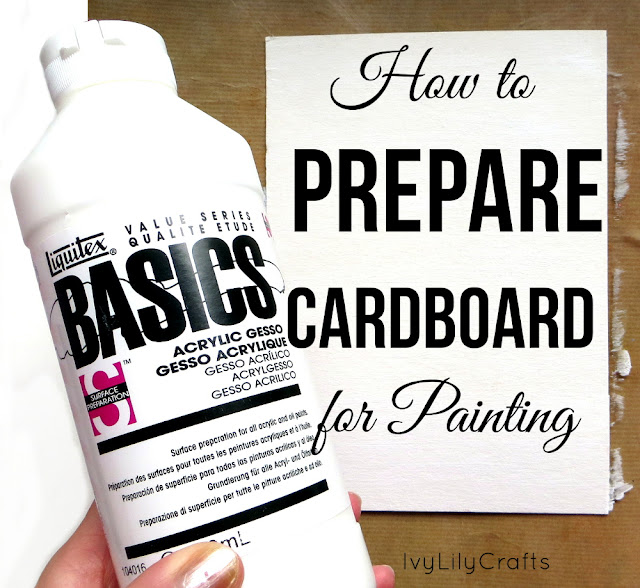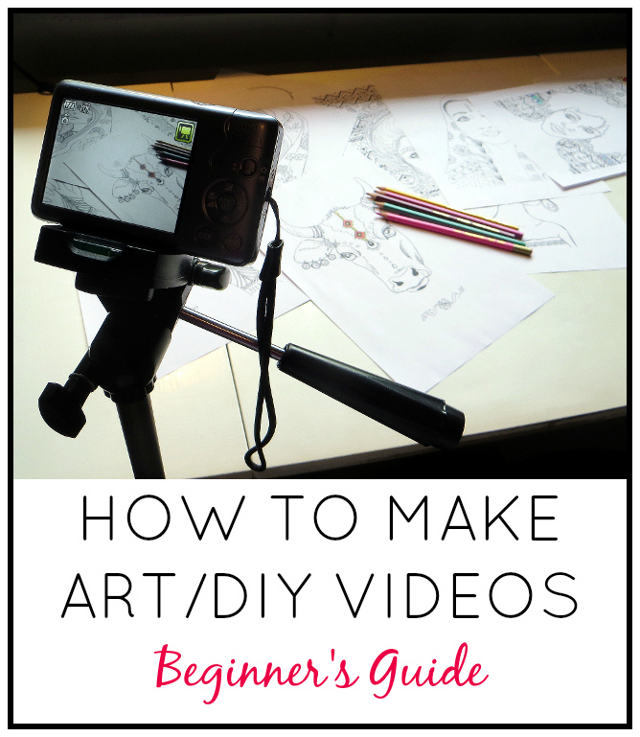Sponge and Splatter Painting | Watercolor and Acrylic Mixed Media Elephant
Want to paint an abstract splattered or smokey looking background with acrylics? I'll show you how to create it with sponge and splatter painting techniques I used on a Holi elephant watercolor and acrylic mixed media painting.
I find the colorful culture of India inspiring and I painted a decorated elephant for the last Holi Festival of Colors. One of the Holi traditions is throwing colorful Holi powders and mixing them with water to make the colors stick to people. I used sponge painting and paint splattering with a brush to get the Holi powder effect for the background. I also made a video version so you can watch the painting process and listen to me talk through it, if you prefer.
Art Supplies
 |
| I used graphite transfer paper for transferring the sketch to watercolor paper. |
I sketched on graph paper to make it easier to use the grid method and transferred the sketch with graphite transfer paper*. I painted on watercolor paper and I taped it onto a piece of hardboard to keep it in place and prevent the paper from warping too much. I used the Cotman watercolor set*.
Besides brushes, I also used a sponge and a cotton swab. I put water in two glass jars. The point is to clean brushes in one jar and use the clean water in the other for painting, but I usually forget that. Paper towels are also handy for wiping the brushes or lifting paint, when you make mistakes. I'll talk more about the acrylics I used in the acrylic painting section below. (* These links are affiliate/referral links that let you support the blog at no extra cost to you.)
 |
| I painted on watercolor paper and used the Cotman watercolor set. |
List of art supplies
• Graph paper for sketching• Graphite transfer paper*
• Ballpoint pen and watercolor pencil for sketching
• Cotman watercolor set*
• Classic 250 gsm rough, acid free watercolor paper
• Painter's tape
• Plus Color Acrylic Paints*
• Crelando Acrylic Paints*
• Mont Marte Metallic Acrylics*
• Ikea's Måla brush set + paint palette*
• Sponge
• Cotton swab
• Paper towels
• Glass jars
 |
| I used a variety of acrylic paints for the background and decorations. |
Sketching Stage
Let's start with the sketching stage. I found one cute elephant photo from my sister's old holiday photos from Goa, India. After that I searched for more photos from Pexels, which offers free photos for commercial use so you can use them as reference photos without worrying about copyrights.
I chose one of them as the main reference and used the grid method to get the proportions about right, when I sketched the elephant. I did change up some features, though. I also took inspiration from other elephant paintings I found.
 |
| I sketched on grid paper using the grid method to get the proportions right. |
I transferred the sketch onto 250 gsm watercolor paper by taping the sketch on top of the paper, placing the transfer paper between them, darker side down and tracing the sketch with a ballpoint pen. The transfer lines tend to show up in the final painting from underneath the watercolor so I erased some of them a bit and changed them to watercolor pencil, which will dissolve when you paint over it.
By the way, if you need help deciding on a color scheme, you can use the free Adobe Color Wheel. You can choose one color you want to use and let the color wheel suggest other colors based on different color schemes like a complementary color or a triad color scheme.
Watercolor Elephant
I started the painting with watercolors. I knew I wanted to paint the background in acrylics to get the effect I wanted, but I paint faster with watercolor so I used watercolor for the elephant. I also like the look of a more delicate watercolor character in and saturated acrylic background with some colorful acrylic details.
I layered the watercolor starting with a light wash of cobalt and ultramarine blue and leaving the highlight parts white. I also mixed in a bit of crimson red and burnt umber to make the blue more grayish especially in the legs, because I wanted the main focus to be on the face.
 |
| I started with watercolors. |
I added more saturated color to create the texture of the elephant skin and to add shadows. I wanted the main colors of the painting to be blue, a cold red and yellow so I added crimson red to the ears and the trunk.
I knew I was going to paint the decorations on the elephant with acrylics, so I just left most of those parts white. You can paint acrylic over watercolor though, but not the other way around.
Acrylic Painting Techniques
 |
| I painted the background black with acrylics. |
When the watercolor part was done, I switched to acrylics for the background and decorations. I first painted the background black. The black paint I have from Lidl is not that opaque so I mixed it together with an opaque white by Plus Color to create an opaque, dark grey. I first outlined the elephant with a small brush to be precise. Next I filled in the rest of the background with a larger brush to get it done faster.
I let the background dry, but I thought it wasn't dark enough so I painted pure black over it. Since the background was already covered with dark grey, it didn't matter that the black wasn't completely opaque since all that would show through was the dark grey and not white.
 |
| I think a flat, black background makes a watercolor character look more striking. |
I painted white acrylic over the watercolor on the jewelry and decorations. I protected the elephant before painting Holi powder effect on the background. I just put a copy paper over the painting and traced the outline of the elephant and cut it and taped it on the elephant.
I mixed acrylics from Lidl and Plus color acrylics to create the blue, purple and red Holi powder colors, because the Plus color paints were a little lighter than I wanted. I used sponge painting to get the powdery look by dabbing on clouds of paint with the sponge and letting the colors mix together at the edges.
 |
| Finished Holi elephant painting. |
Afterwards I added splatters by making the paint really watery and then tapping the brush against another brush. Remember to protect the surface you're working on, because you'll get splatters all around. And wipe them off right after you're done with this technique before they dry. Some of the splatters were quite big, so I could've used a smaller brush. I actually watched a Holi acrylic painting tutorial by The Art Sherpa, where she used splatters and cotton swabs for the Holi powder. You can watch her video to see her technique.
I realized at some point after making the sketch that the placing of the powder behind the elephant's back like this might not be the best idea. And I was going to make them more diagonal as if they were coming from the sides outside of the painting, but I forgot and ended up painting them coming from behind the elephant.
 |
| Prints and merch of the Holi elephant painting are available in my shop. |
When the background was done, I took off the protective paper and painted on all the jewelry and decorations in acrylics. I used at least two layers for the yellow and red parts to make them look even and opaque. The cloth on the back looked pretty empty so I added abstract flowers on it by dabbing on paint with a cotton swab.
I painted these tear drop shapes of yellow around the eyes and of course the transparent yellow turned into green with the blue watercolor underneath. I also lined all the acrylic parts of the face with metallic gold acrylic paint to add some shine.
The paint splatters in the background were not that bright so I painted on more concentrated paint drops with a small brush. The lower part of the background looked empty so I continued the dots there too.
Framing tip!
 |
| I painted the edges of the painting black after peeling the tape. |
If you're planning on framing a painting that you taped down with masking tape, the white edges might show when it's framed. I don't like that so after removing the tapes, I paint the white edges either black or some color that's close to the background color of the painting. That way I don't get those annoying white edges.







Comments
Post a Comment